Attractions · Czech Republic · Eastern Europe · Europe · Events · Going Out · Regions · Travel Miscellany
12 great reasons to visit Ostrava in the Czech Republic
When I arrived in the outskirts of the Czech Republic industrial city of Ostrava, I thought I would see a rough town in a flat area, but I was amazed to find myself in a bright and radiant city like a solitaire in a circle, as I was at the crossing of four rivers: the Lučina, Odra, Opava and Ostravice, all surrounded by green hills. Here are 12 great reasons why Ostrava is an amazing place to visit.
 1. Industrial heritage
Ostrava got its name from Ostra River (Ostravice) where the city grew from the early settlements in the 13th century. The city became an important industrial location after the discovery of coalfields in the 18th century. The unearthing of the high quality coal was a major change for the life of people in this, the third largest city in the Czech Republic. Today the importance of coal has declined. Now the city is a cultural centre.
1. Industrial heritage
Ostrava got its name from Ostra River (Ostravice) where the city grew from the early settlements in the 13th century. The city became an important industrial location after the discovery of coalfields in the 18th century. The unearthing of the high quality coal was a major change for the life of people in this, the third largest city in the Czech Republic. Today the importance of coal has declined. Now the city is a cultural centre.
 2. Landek Park Mine
One of many mines around Ostrava which has been retained in its original state as a museum is located in Landek Park Mine, Landek Park, eight kilometers from Ostrava city centre. Touring the coal mine is a journey to the past where nearly 3,000 miners used to work 620 metres underground to extract the vital fuel for private and commercial industries.
2. Landek Park Mine
One of many mines around Ostrava which has been retained in its original state as a museum is located in Landek Park Mine, Landek Park, eight kilometers from Ostrava city centre. Touring the coal mine is a journey to the past where nearly 3,000 miners used to work 620 metres underground to extract the vital fuel for private and commercial industries.
 We boarded an original 19th century cage that used to carry workers and containers of coal. It is secured for the purpose of the exhibition, but it is still operated traditionally by the same old mechanical devices and by operators calling from two ends of the shaft. I entered the first long corridor followed by smaller narrower passages looking at extreme working conditions and surrounded by wooden beams and steel columns. The ceiling in some places was very low, so watch your heads even if you have a hard hat! There were also a few very tight, horizontal tracks deep into the rock where a worker had to lie flat on his chest to work. You could almost hear the voices of the workers, hammering on the wall, shouting at each other as they laboured. I could visualise the men in dusty outfits and blackened faces heaving the coal containers onto the rails as the sound of compressors heavy drowned out their efforts. Here was an industrial orchestra combining to produce a miners opera of drama, music and achievement.
History was kept alive in a rear example of a working mine (closed in 1992) which has been converted to an educational museum. I only experienced a fraction of the number of corridors that burrowed deep into the rocky hills yet I sensed the hardship of the miners. The guide told me that there used to be six levels, but could not verify to me exactly what was the exact total length of the tunnels. It could be thousands of metres in all directions. The air was very fresh in the mine. I guess the upcast pit which used to ventilate the Landek mine is still serving this amazing underground museum.
We returned to ground level and followed our guide to visit a huge hall which is where the drying took place of the workers clothing and kits. Another interesting part of the museum is the display of mining machinery, rescue and respiratory equipment and mining lamps. There was also a room with memorials listing the names of those rescuers who were killed during rescue operations. One of the miners told us about his bitter memory of witnessing his colleagues death. The mines were constantly subject to dangerous incidents such as flooding and the collapse of walls and ceilings.
3. Masaryk Square and Old Town Hall
I stayed in the Imperial Hotel, opened in 1904, at the heart of Ostrava city center. Imperial it might have been once but today, as a reminder of communist days, there are uniform sets of engraved sickles on the front of the building. A short tour of the city could only partly reveal to me the past history of the communist era. The buildings are no longer grey and dark, even though you may find them like that in some streets. In the main square, Masaryk Square named after the first president of Czechoslovakia, and the streets leading to it the façade of old buildings is in white, yellow and light blue and pink colours which paint the city with a new colourful image similar to other western European cities. The square is dominated by the Old Town Hall in yellow with a New Renaissance fascia and a high watchtower rebuilt in 1727 in baroque style. This building, which currently houses Ostrava Museum, is one of the few structures which survived an extensive fire which destroyed the city in 1556 and again in 1675. As you enter the museum, you can see through glass under your feet the remains of a stone wall from 14th century.
We boarded an original 19th century cage that used to carry workers and containers of coal. It is secured for the purpose of the exhibition, but it is still operated traditionally by the same old mechanical devices and by operators calling from two ends of the shaft. I entered the first long corridor followed by smaller narrower passages looking at extreme working conditions and surrounded by wooden beams and steel columns. The ceiling in some places was very low, so watch your heads even if you have a hard hat! There were also a few very tight, horizontal tracks deep into the rock where a worker had to lie flat on his chest to work. You could almost hear the voices of the workers, hammering on the wall, shouting at each other as they laboured. I could visualise the men in dusty outfits and blackened faces heaving the coal containers onto the rails as the sound of compressors heavy drowned out their efforts. Here was an industrial orchestra combining to produce a miners opera of drama, music and achievement.
History was kept alive in a rear example of a working mine (closed in 1992) which has been converted to an educational museum. I only experienced a fraction of the number of corridors that burrowed deep into the rocky hills yet I sensed the hardship of the miners. The guide told me that there used to be six levels, but could not verify to me exactly what was the exact total length of the tunnels. It could be thousands of metres in all directions. The air was very fresh in the mine. I guess the upcast pit which used to ventilate the Landek mine is still serving this amazing underground museum.
We returned to ground level and followed our guide to visit a huge hall which is where the drying took place of the workers clothing and kits. Another interesting part of the museum is the display of mining machinery, rescue and respiratory equipment and mining lamps. There was also a room with memorials listing the names of those rescuers who were killed during rescue operations. One of the miners told us about his bitter memory of witnessing his colleagues death. The mines were constantly subject to dangerous incidents such as flooding and the collapse of walls and ceilings.
3. Masaryk Square and Old Town Hall
I stayed in the Imperial Hotel, opened in 1904, at the heart of Ostrava city center. Imperial it might have been once but today, as a reminder of communist days, there are uniform sets of engraved sickles on the front of the building. A short tour of the city could only partly reveal to me the past history of the communist era. The buildings are no longer grey and dark, even though you may find them like that in some streets. In the main square, Masaryk Square named after the first president of Czechoslovakia, and the streets leading to it the façade of old buildings is in white, yellow and light blue and pink colours which paint the city with a new colourful image similar to other western European cities. The square is dominated by the Old Town Hall in yellow with a New Renaissance fascia and a high watchtower rebuilt in 1727 in baroque style. This building, which currently houses Ostrava Museum, is one of the few structures which survived an extensive fire which destroyed the city in 1556 and again in 1675. As you enter the museum, you can see through glass under your feet the remains of a stone wall from 14th century.
 The children were playing around a fountain opposite a building called PUB in one side of the square. Keeping teenagers busy, on the far side, was an artificial setting for beach volleyball. In the middle of the square, a baroque sculpture, the statute of St Florian stands as a patron of the city to protect against fire. For the centre of a city, the square was not busy. I generally found the town to be very quiet and free of traffic jams. I guess the nearby shopping mall attracted the crowds emptying the streets around the city centre.
4. Miniuni (a mini world of attractions)
The compact city of Ostrava is easily accessible in all directions and everything is within walking distance. After a stroll around the city window shopping, I entered the Miniuni, a mini world of attractions and miniature models, seven wonders of the world and important European landmarks such as Big Ben, the Eiffel Tower, the Brandenburg Gate and as well as small-scale trains and waterways.
The children were playing around a fountain opposite a building called PUB in one side of the square. Keeping teenagers busy, on the far side, was an artificial setting for beach volleyball. In the middle of the square, a baroque sculpture, the statute of St Florian stands as a patron of the city to protect against fire. For the centre of a city, the square was not busy. I generally found the town to be very quiet and free of traffic jams. I guess the nearby shopping mall attracted the crowds emptying the streets around the city centre.
4. Miniuni (a mini world of attractions)
The compact city of Ostrava is easily accessible in all directions and everything is within walking distance. After a stroll around the city window shopping, I entered the Miniuni, a mini world of attractions and miniature models, seven wonders of the world and important European landmarks such as Big Ben, the Eiffel Tower, the Brandenburg Gate and as well as small-scale trains and waterways.
 5. Black Meadow Exhibition Centre
I was on my way towards Ostravice River where I found myself in front of Ostravske Vystavy, Black Meadow Exhibition Centre where, American classic cars were being exhibited. There were brash Mustangs, Buicks and Chevrolets from the 1950s and 1960s plus older cars from 1911 and some old VW models in the hall.
5. Black Meadow Exhibition Centre
I was on my way towards Ostravice River where I found myself in front of Ostravske Vystavy, Black Meadow Exhibition Centre where, American classic cars were being exhibited. There were brash Mustangs, Buicks and Chevrolets from the 1950s and 1960s plus older cars from 1911 and some old VW models in the hall.
 6. Silesian Ostrava Castle
I continued my journey through an iron footbridge crossing Ostravice River passing underneath a huge concrete motorway before arriving in a beautiful park where Silesian Ostrava Castle was located. The 13th century castle is located on a hill near where the Ostravice and Lučina rivers meet. It is a historical monument honouring where the early settlers used to live. What we see today is not what it looked like originally as it has been destroyed and rebuilt many times. In the 19th century, it was rebuilt after a fire but it was almost destroyed again after sinking 16 metres into the ground due to mining subsidence. The preserved structure and its surrounding walls, complemented with a number of exhibitions, including torture exhibits, are open for public viewing.
6. Silesian Ostrava Castle
I continued my journey through an iron footbridge crossing Ostravice River passing underneath a huge concrete motorway before arriving in a beautiful park where Silesian Ostrava Castle was located. The 13th century castle is located on a hill near where the Ostravice and Lučina rivers meet. It is a historical monument honouring where the early settlers used to live. What we see today is not what it looked like originally as it has been destroyed and rebuilt many times. In the 19th century, it was rebuilt after a fire but it was almost destroyed again after sinking 16 metres into the ground due to mining subsidence. The preserved structure and its surrounding walls, complemented with a number of exhibitions, including torture exhibits, are open for public viewing.
 7. The Antonín Dvořák Theatre
A short distance from my hotel was the Antonín Dvořák Theatre, an Opera House (built in 1907) which is located where opera, drama, ballet and musical programs are performed. The interior is magnificently designed with imperial colours of red and gold, illuminated by hidden lights and royal crystal chandeliers hanging from a well-decorated ceiling.
7. The Antonín Dvořák Theatre
A short distance from my hotel was the Antonín Dvořák Theatre, an Opera House (built in 1907) which is located where opera, drama, ballet and musical programs are performed. The interior is magnificently designed with imperial colours of red and gold, illuminated by hidden lights and royal crystal chandeliers hanging from a well-decorated ceiling.
 8. The Roman Catholic Cathedral
I returned towards the city centre looking for another iconic monument of Ostrava, the Roman Catholic Cathedral of the Divine Saviour built in 1889. The exterior architecture of the basilica is ornamented in Neo-Renaissance style with a semi-circular apse in the rear of the building and two towers with clocks in four sides standing high in the anterior of the church. I found simplicity in the interior of the church with hollow spaces and a neo baroque organ blessed with the relics of Saint Hedwig of Silesia at the altar.
8. The Roman Catholic Cathedral
I returned towards the city centre looking for another iconic monument of Ostrava, the Roman Catholic Cathedral of the Divine Saviour built in 1889. The exterior architecture of the basilica is ornamented in Neo-Renaissance style with a semi-circular apse in the rear of the building and two towers with clocks in four sides standing high in the anterior of the church. I found simplicity in the interior of the church with hollow spaces and a neo baroque organ blessed with the relics of Saint Hedwig of Silesia at the altar.
 9. New Town Hall and viewing tower
I ended my inner city tour by visiting the Ostravas New Town Hall in the Prokeovo náměstí square where the tourist information centre and entrance to a viewing tower is located. It is a platform encircled by wire mesh, 240 feet above the ground and, from here, there a 360-degree panoramic view of the city and I could see all the city landmarks plus the industrial landscapes, mighty ironworks and the Beskydy Mountains. The smoke from distant factories is evidence of the continuing industrial legacy.
9. New Town Hall and viewing tower
I ended my inner city tour by visiting the Ostravas New Town Hall in the Prokeovo náměstí square where the tourist information centre and entrance to a viewing tower is located. It is a platform encircled by wire mesh, 240 feet above the ground and, from here, there a 360-degree panoramic view of the city and I could see all the city landmarks plus the industrial landscapes, mighty ironworks and the Beskydy Mountains. The smoke from distant factories is evidence of the continuing industrial legacy.
 10. Lower Vítkovice industrial site
It was unusual to walk through such a large-scale industrial site such as the one in Lower Vítkovice industrial site which is only a fifteen minute journey from the city centre by tram and which was fully open to the public after all its operations halted in 1998. It was just like being on a science fiction movie set, a giant compound of steel masts, tough pipes, enormous cylinders and ducts. I strolled around this unique small town of iron under huge rusty metal settings.
10. Lower Vítkovice industrial site
It was unusual to walk through such a large-scale industrial site such as the one in Lower Vítkovice industrial site which is only a fifteen minute journey from the city centre by tram and which was fully open to the public after all its operations halted in 1998. It was just like being on a science fiction movie set, a giant compound of steel masts, tough pipes, enormous cylinders and ducts. I strolled around this unique small town of iron under huge rusty metal settings.
 At the Bolt Tower – reached via a glass elevator you travel to the top of an industrial complex gaining a panaromic view of its mighty structure of coking and chemical plants which are surrounded by several other factories. The café in the top of the tower is a nice place to relax and reflect on the advance of science and technology.
We continued our tour walking through metal corridors around the tower, leading us to where the blast furnace was located. It was the lowest part of the oven system and we could view its cave-like interior built from highly heat-resistant bricks in order to process iron.
One of this sites productions was gas. The last part of our tour was visiting the huge gas container which fed nearby factories. It has now been converted into a large performance and conference hall called Gong, seating 1500 people.
11. Beats for Love festival
My visit coincided with the annual Beats for Love festival, one of the cultural events held in the industrial site. With 300 artists from all over Europe being watched by 40,000 of us, it shows how a seemingly inappropriate industrial site can be used for a cultural festival. Beats for Love celebrated the joys of summer whilst being dwarfed by industrial architecture from another age rather than the more traditional music festival halls. Many would think it wouldnt or shouldnt work but it does and the numbers attending rises year on year.
At the Bolt Tower – reached via a glass elevator you travel to the top of an industrial complex gaining a panaromic view of its mighty structure of coking and chemical plants which are surrounded by several other factories. The café in the top of the tower is a nice place to relax and reflect on the advance of science and technology.
We continued our tour walking through metal corridors around the tower, leading us to where the blast furnace was located. It was the lowest part of the oven system and we could view its cave-like interior built from highly heat-resistant bricks in order to process iron.
One of this sites productions was gas. The last part of our tour was visiting the huge gas container which fed nearby factories. It has now been converted into a large performance and conference hall called Gong, seating 1500 people.
11. Beats for Love festival
My visit coincided with the annual Beats for Love festival, one of the cultural events held in the industrial site. With 300 artists from all over Europe being watched by 40,000 of us, it shows how a seemingly inappropriate industrial site can be used for a cultural festival. Beats for Love celebrated the joys of summer whilst being dwarfed by industrial architecture from another age rather than the more traditional music festival halls. Many would think it wouldnt or shouldnt work but it does and the numbers attending rises year on year.
 12. Ostrava Science and Technology Centre
Opposite this industrial monument is Ostrava Science and Technology Centre (Svet Techniky Ostrava), a former power station which used to be called U6. This is a fascinating interactive and fun museum in comparison to the more grim and complex industrial setting that I had previously visited.
The centre offers many stimulating features to educate and entertain both adults and children. The complicated science and technology principles are explained in simple language. I particularly liked the stimulator showing the body scan and an instrument that was playing a drum triggered by ones heartbeat.
12. Ostrava Science and Technology Centre
Opposite this industrial monument is Ostrava Science and Technology Centre (Svet Techniky Ostrava), a former power station which used to be called U6. This is a fascinating interactive and fun museum in comparison to the more grim and complex industrial setting that I had previously visited.
The centre offers many stimulating features to educate and entertain both adults and children. The complicated science and technology principles are explained in simple language. I particularly liked the stimulator showing the body scan and an instrument that was playing a drum triggered by ones heartbeat.
 Post-communist Ostrava is a flourishing city, embracing regeneration and a cultural metropolis with new ideas. It is converting its industrial heritage into tourist attractions and looking forward to a brighter cultural future.
Post-communist Ostrava is a flourishing city, embracing regeneration and a cultural metropolis with new ideas. It is converting its industrial heritage into tourist attractions and looking forward to a brighter cultural future.
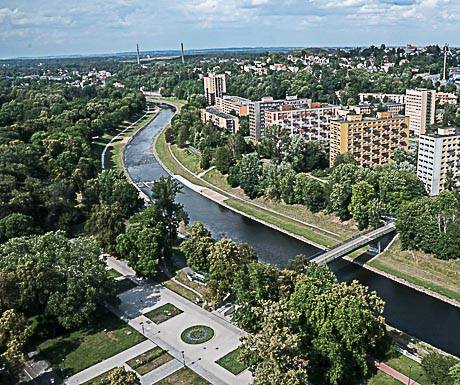 1. Industrial heritage
Ostrava got its name from Ostra River (Ostravice) where the city grew from the early settlements in the 13th century. The city became an important industrial location after the discovery of coalfields in the 18th century. The unearthing of the high quality coal was a major change for the life of people in this, the third largest city in the Czech Republic. Today the importance of coal has declined. Now the city is a cultural centre.
1. Industrial heritage
Ostrava got its name from Ostra River (Ostravice) where the city grew from the early settlements in the 13th century. The city became an important industrial location after the discovery of coalfields in the 18th century. The unearthing of the high quality coal was a major change for the life of people in this, the third largest city in the Czech Republic. Today the importance of coal has declined. Now the city is a cultural centre.
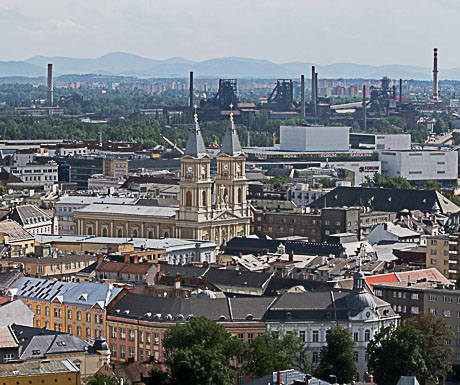 2. Landek Park Mine
One of many mines around Ostrava which has been retained in its original state as a museum is located in Landek Park Mine, Landek Park, eight kilometers from Ostrava city centre. Touring the coal mine is a journey to the past where nearly 3,000 miners used to work 620 metres underground to extract the vital fuel for private and commercial industries.
2. Landek Park Mine
One of many mines around Ostrava which has been retained in its original state as a museum is located in Landek Park Mine, Landek Park, eight kilometers from Ostrava city centre. Touring the coal mine is a journey to the past where nearly 3,000 miners used to work 620 metres underground to extract the vital fuel for private and commercial industries.
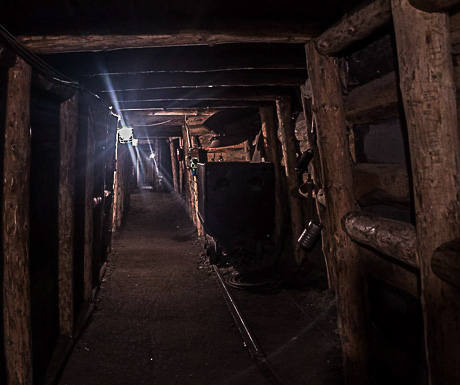 We boarded an original 19th century cage that used to carry workers and containers of coal. It is secured for the purpose of the exhibition, but it is still operated traditionally by the same old mechanical devices and by operators calling from two ends of the shaft. I entered the first long corridor followed by smaller narrower passages looking at extreme working conditions and surrounded by wooden beams and steel columns. The ceiling in some places was very low, so watch your heads even if you have a hard hat! There were also a few very tight, horizontal tracks deep into the rock where a worker had to lie flat on his chest to work. You could almost hear the voices of the workers, hammering on the wall, shouting at each other as they laboured. I could visualise the men in dusty outfits and blackened faces heaving the coal containers onto the rails as the sound of compressors heavy drowned out their efforts. Here was an industrial orchestra combining to produce a miners opera of drama, music and achievement.
History was kept alive in a rear example of a working mine (closed in 1992) which has been converted to an educational museum. I only experienced a fraction of the number of corridors that burrowed deep into the rocky hills yet I sensed the hardship of the miners. The guide told me that there used to be six levels, but could not verify to me exactly what was the exact total length of the tunnels. It could be thousands of metres in all directions. The air was very fresh in the mine. I guess the upcast pit which used to ventilate the Landek mine is still serving this amazing underground museum.
We returned to ground level and followed our guide to visit a huge hall which is where the drying took place of the workers clothing and kits. Another interesting part of the museum is the display of mining machinery, rescue and respiratory equipment and mining lamps. There was also a room with memorials listing the names of those rescuers who were killed during rescue operations. One of the miners told us about his bitter memory of witnessing his colleagues death. The mines were constantly subject to dangerous incidents such as flooding and the collapse of walls and ceilings.
3. Masaryk Square and Old Town Hall
I stayed in the Imperial Hotel, opened in 1904, at the heart of Ostrava city center. Imperial it might have been once but today, as a reminder of communist days, there are uniform sets of engraved sickles on the front of the building. A short tour of the city could only partly reveal to me the past history of the communist era. The buildings are no longer grey and dark, even though you may find them like that in some streets. In the main square, Masaryk Square named after the first president of Czechoslovakia, and the streets leading to it the façade of old buildings is in white, yellow and light blue and pink colours which paint the city with a new colourful image similar to other western European cities. The square is dominated by the Old Town Hall in yellow with a New Renaissance fascia and a high watchtower rebuilt in 1727 in baroque style. This building, which currently houses Ostrava Museum, is one of the few structures which survived an extensive fire which destroyed the city in 1556 and again in 1675. As you enter the museum, you can see through glass under your feet the remains of a stone wall from 14th century.
We boarded an original 19th century cage that used to carry workers and containers of coal. It is secured for the purpose of the exhibition, but it is still operated traditionally by the same old mechanical devices and by operators calling from two ends of the shaft. I entered the first long corridor followed by smaller narrower passages looking at extreme working conditions and surrounded by wooden beams and steel columns. The ceiling in some places was very low, so watch your heads even if you have a hard hat! There were also a few very tight, horizontal tracks deep into the rock where a worker had to lie flat on his chest to work. You could almost hear the voices of the workers, hammering on the wall, shouting at each other as they laboured. I could visualise the men in dusty outfits and blackened faces heaving the coal containers onto the rails as the sound of compressors heavy drowned out their efforts. Here was an industrial orchestra combining to produce a miners opera of drama, music and achievement.
History was kept alive in a rear example of a working mine (closed in 1992) which has been converted to an educational museum. I only experienced a fraction of the number of corridors that burrowed deep into the rocky hills yet I sensed the hardship of the miners. The guide told me that there used to be six levels, but could not verify to me exactly what was the exact total length of the tunnels. It could be thousands of metres in all directions. The air was very fresh in the mine. I guess the upcast pit which used to ventilate the Landek mine is still serving this amazing underground museum.
We returned to ground level and followed our guide to visit a huge hall which is where the drying took place of the workers clothing and kits. Another interesting part of the museum is the display of mining machinery, rescue and respiratory equipment and mining lamps. There was also a room with memorials listing the names of those rescuers who were killed during rescue operations. One of the miners told us about his bitter memory of witnessing his colleagues death. The mines were constantly subject to dangerous incidents such as flooding and the collapse of walls and ceilings.
3. Masaryk Square and Old Town Hall
I stayed in the Imperial Hotel, opened in 1904, at the heart of Ostrava city center. Imperial it might have been once but today, as a reminder of communist days, there are uniform sets of engraved sickles on the front of the building. A short tour of the city could only partly reveal to me the past history of the communist era. The buildings are no longer grey and dark, even though you may find them like that in some streets. In the main square, Masaryk Square named after the first president of Czechoslovakia, and the streets leading to it the façade of old buildings is in white, yellow and light blue and pink colours which paint the city with a new colourful image similar to other western European cities. The square is dominated by the Old Town Hall in yellow with a New Renaissance fascia and a high watchtower rebuilt in 1727 in baroque style. This building, which currently houses Ostrava Museum, is one of the few structures which survived an extensive fire which destroyed the city in 1556 and again in 1675. As you enter the museum, you can see through glass under your feet the remains of a stone wall from 14th century.
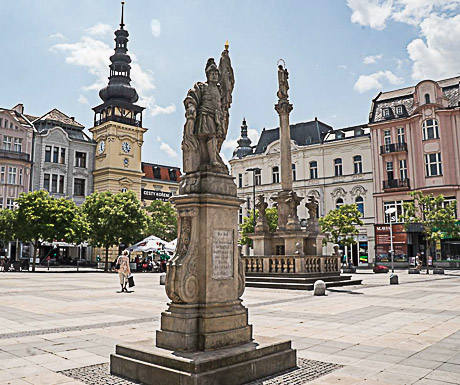 The children were playing around a fountain opposite a building called PUB in one side of the square. Keeping teenagers busy, on the far side, was an artificial setting for beach volleyball. In the middle of the square, a baroque sculpture, the statute of St Florian stands as a patron of the city to protect against fire. For the centre of a city, the square was not busy. I generally found the town to be very quiet and free of traffic jams. I guess the nearby shopping mall attracted the crowds emptying the streets around the city centre.
4. Miniuni (a mini world of attractions)
The compact city of Ostrava is easily accessible in all directions and everything is within walking distance. After a stroll around the city window shopping, I entered the Miniuni, a mini world of attractions and miniature models, seven wonders of the world and important European landmarks such as Big Ben, the Eiffel Tower, the Brandenburg Gate and as well as small-scale trains and waterways.
The children were playing around a fountain opposite a building called PUB in one side of the square. Keeping teenagers busy, on the far side, was an artificial setting for beach volleyball. In the middle of the square, a baroque sculpture, the statute of St Florian stands as a patron of the city to protect against fire. For the centre of a city, the square was not busy. I generally found the town to be very quiet and free of traffic jams. I guess the nearby shopping mall attracted the crowds emptying the streets around the city centre.
4. Miniuni (a mini world of attractions)
The compact city of Ostrava is easily accessible in all directions and everything is within walking distance. After a stroll around the city window shopping, I entered the Miniuni, a mini world of attractions and miniature models, seven wonders of the world and important European landmarks such as Big Ben, the Eiffel Tower, the Brandenburg Gate and as well as small-scale trains and waterways.
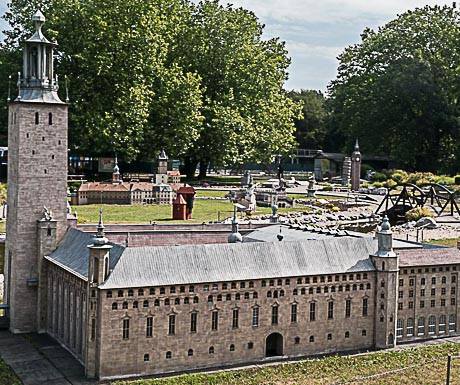 5. Black Meadow Exhibition Centre
I was on my way towards Ostravice River where I found myself in front of Ostravske Vystavy, Black Meadow Exhibition Centre where, American classic cars were being exhibited. There were brash Mustangs, Buicks and Chevrolets from the 1950s and 1960s plus older cars from 1911 and some old VW models in the hall.
5. Black Meadow Exhibition Centre
I was on my way towards Ostravice River where I found myself in front of Ostravske Vystavy, Black Meadow Exhibition Centre where, American classic cars were being exhibited. There were brash Mustangs, Buicks and Chevrolets from the 1950s and 1960s plus older cars from 1911 and some old VW models in the hall.
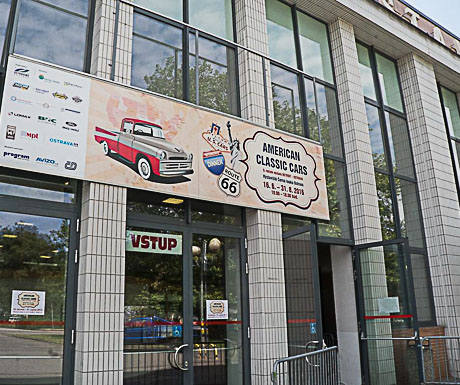 6. Silesian Ostrava Castle
I continued my journey through an iron footbridge crossing Ostravice River passing underneath a huge concrete motorway before arriving in a beautiful park where Silesian Ostrava Castle was located. The 13th century castle is located on a hill near where the Ostravice and Lučina rivers meet. It is a historical monument honouring where the early settlers used to live. What we see today is not what it looked like originally as it has been destroyed and rebuilt many times. In the 19th century, it was rebuilt after a fire but it was almost destroyed again after sinking 16 metres into the ground due to mining subsidence. The preserved structure and its surrounding walls, complemented with a number of exhibitions, including torture exhibits, are open for public viewing.
6. Silesian Ostrava Castle
I continued my journey through an iron footbridge crossing Ostravice River passing underneath a huge concrete motorway before arriving in a beautiful park where Silesian Ostrava Castle was located. The 13th century castle is located on a hill near where the Ostravice and Lučina rivers meet. It is a historical monument honouring where the early settlers used to live. What we see today is not what it looked like originally as it has been destroyed and rebuilt many times. In the 19th century, it was rebuilt after a fire but it was almost destroyed again after sinking 16 metres into the ground due to mining subsidence. The preserved structure and its surrounding walls, complemented with a number of exhibitions, including torture exhibits, are open for public viewing.
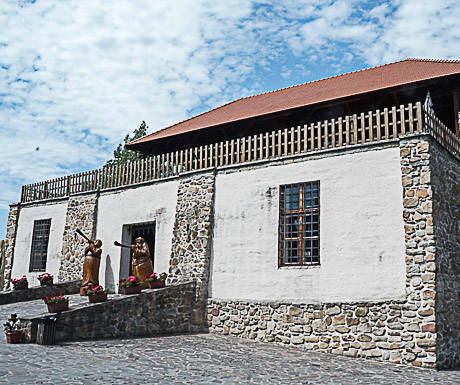 7. The Antonín Dvořák Theatre
A short distance from my hotel was the Antonín Dvořák Theatre, an Opera House (built in 1907) which is located where opera, drama, ballet and musical programs are performed. The interior is magnificently designed with imperial colours of red and gold, illuminated by hidden lights and royal crystal chandeliers hanging from a well-decorated ceiling.
7. The Antonín Dvořák Theatre
A short distance from my hotel was the Antonín Dvořák Theatre, an Opera House (built in 1907) which is located where opera, drama, ballet and musical programs are performed. The interior is magnificently designed with imperial colours of red and gold, illuminated by hidden lights and royal crystal chandeliers hanging from a well-decorated ceiling.
 8. The Roman Catholic Cathedral
I returned towards the city centre looking for another iconic monument of Ostrava, the Roman Catholic Cathedral of the Divine Saviour built in 1889. The exterior architecture of the basilica is ornamented in Neo-Renaissance style with a semi-circular apse in the rear of the building and two towers with clocks in four sides standing high in the anterior of the church. I found simplicity in the interior of the church with hollow spaces and a neo baroque organ blessed with the relics of Saint Hedwig of Silesia at the altar.
8. The Roman Catholic Cathedral
I returned towards the city centre looking for another iconic monument of Ostrava, the Roman Catholic Cathedral of the Divine Saviour built in 1889. The exterior architecture of the basilica is ornamented in Neo-Renaissance style with a semi-circular apse in the rear of the building and two towers with clocks in four sides standing high in the anterior of the church. I found simplicity in the interior of the church with hollow spaces and a neo baroque organ blessed with the relics of Saint Hedwig of Silesia at the altar.
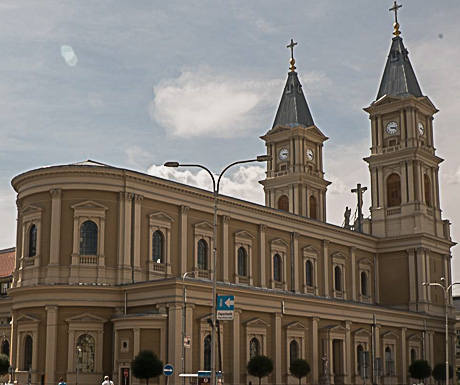 9. New Town Hall and viewing tower
I ended my inner city tour by visiting the Ostravas New Town Hall in the Prokeovo náměstí square where the tourist information centre and entrance to a viewing tower is located. It is a platform encircled by wire mesh, 240 feet above the ground and, from here, there a 360-degree panoramic view of the city and I could see all the city landmarks plus the industrial landscapes, mighty ironworks and the Beskydy Mountains. The smoke from distant factories is evidence of the continuing industrial legacy.
9. New Town Hall and viewing tower
I ended my inner city tour by visiting the Ostravas New Town Hall in the Prokeovo náměstí square where the tourist information centre and entrance to a viewing tower is located. It is a platform encircled by wire mesh, 240 feet above the ground and, from here, there a 360-degree panoramic view of the city and I could see all the city landmarks plus the industrial landscapes, mighty ironworks and the Beskydy Mountains. The smoke from distant factories is evidence of the continuing industrial legacy.
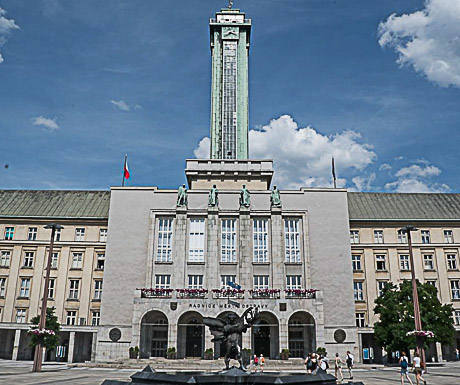 10. Lower Vítkovice industrial site
It was unusual to walk through such a large-scale industrial site such as the one in Lower Vítkovice industrial site which is only a fifteen minute journey from the city centre by tram and which was fully open to the public after all its operations halted in 1998. It was just like being on a science fiction movie set, a giant compound of steel masts, tough pipes, enormous cylinders and ducts. I strolled around this unique small town of iron under huge rusty metal settings.
10. Lower Vítkovice industrial site
It was unusual to walk through such a large-scale industrial site such as the one in Lower Vítkovice industrial site which is only a fifteen minute journey from the city centre by tram and which was fully open to the public after all its operations halted in 1998. It was just like being on a science fiction movie set, a giant compound of steel masts, tough pipes, enormous cylinders and ducts. I strolled around this unique small town of iron under huge rusty metal settings.
 At the Bolt Tower – reached via a glass elevator you travel to the top of an industrial complex gaining a panaromic view of its mighty structure of coking and chemical plants which are surrounded by several other factories. The café in the top of the tower is a nice place to relax and reflect on the advance of science and technology.
We continued our tour walking through metal corridors around the tower, leading us to where the blast furnace was located. It was the lowest part of the oven system and we could view its cave-like interior built from highly heat-resistant bricks in order to process iron.
One of this sites productions was gas. The last part of our tour was visiting the huge gas container which fed nearby factories. It has now been converted into a large performance and conference hall called Gong, seating 1500 people.
11. Beats for Love festival
My visit coincided with the annual Beats for Love festival, one of the cultural events held in the industrial site. With 300 artists from all over Europe being watched by 40,000 of us, it shows how a seemingly inappropriate industrial site can be used for a cultural festival. Beats for Love celebrated the joys of summer whilst being dwarfed by industrial architecture from another age rather than the more traditional music festival halls. Many would think it wouldnt or shouldnt work but it does and the numbers attending rises year on year.
At the Bolt Tower – reached via a glass elevator you travel to the top of an industrial complex gaining a panaromic view of its mighty structure of coking and chemical plants which are surrounded by several other factories. The café in the top of the tower is a nice place to relax and reflect on the advance of science and technology.
We continued our tour walking through metal corridors around the tower, leading us to where the blast furnace was located. It was the lowest part of the oven system and we could view its cave-like interior built from highly heat-resistant bricks in order to process iron.
One of this sites productions was gas. The last part of our tour was visiting the huge gas container which fed nearby factories. It has now been converted into a large performance and conference hall called Gong, seating 1500 people.
11. Beats for Love festival
My visit coincided with the annual Beats for Love festival, one of the cultural events held in the industrial site. With 300 artists from all over Europe being watched by 40,000 of us, it shows how a seemingly inappropriate industrial site can be used for a cultural festival. Beats for Love celebrated the joys of summer whilst being dwarfed by industrial architecture from another age rather than the more traditional music festival halls. Many would think it wouldnt or shouldnt work but it does and the numbers attending rises year on year.
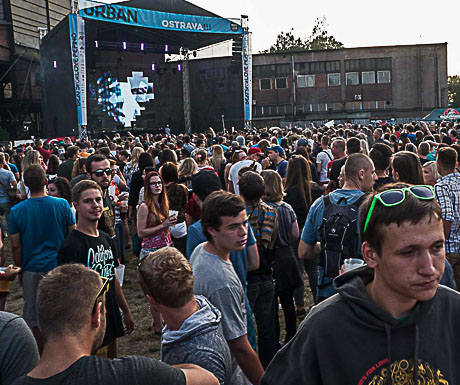 12. Ostrava Science and Technology Centre
Opposite this industrial monument is Ostrava Science and Technology Centre (Svet Techniky Ostrava), a former power station which used to be called U6. This is a fascinating interactive and fun museum in comparison to the more grim and complex industrial setting that I had previously visited.
The centre offers many stimulating features to educate and entertain both adults and children. The complicated science and technology principles are explained in simple language. I particularly liked the stimulator showing the body scan and an instrument that was playing a drum triggered by ones heartbeat.
12. Ostrava Science and Technology Centre
Opposite this industrial monument is Ostrava Science and Technology Centre (Svet Techniky Ostrava), a former power station which used to be called U6. This is a fascinating interactive and fun museum in comparison to the more grim and complex industrial setting that I had previously visited.
The centre offers many stimulating features to educate and entertain both adults and children. The complicated science and technology principles are explained in simple language. I particularly liked the stimulator showing the body scan and an instrument that was playing a drum triggered by ones heartbeat.
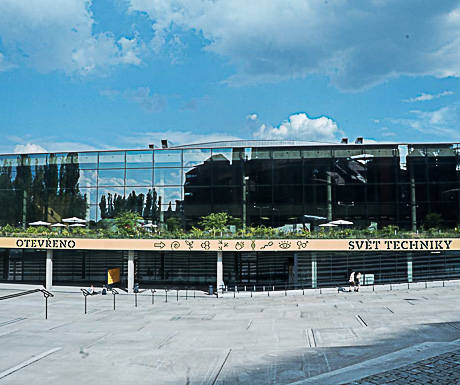 Post-communist Ostrava is a flourishing city, embracing regeneration and a cultural metropolis with new ideas. It is converting its industrial heritage into tourist attractions and looking forward to a brighter cultural future.
Post-communist Ostrava is a flourishing city, embracing regeneration and a cultural metropolis with new ideas. It is converting its industrial heritage into tourist attractions and looking forward to a brighter cultural future.Did you enjoy this article?
Receive similar content direct to your inbox.

